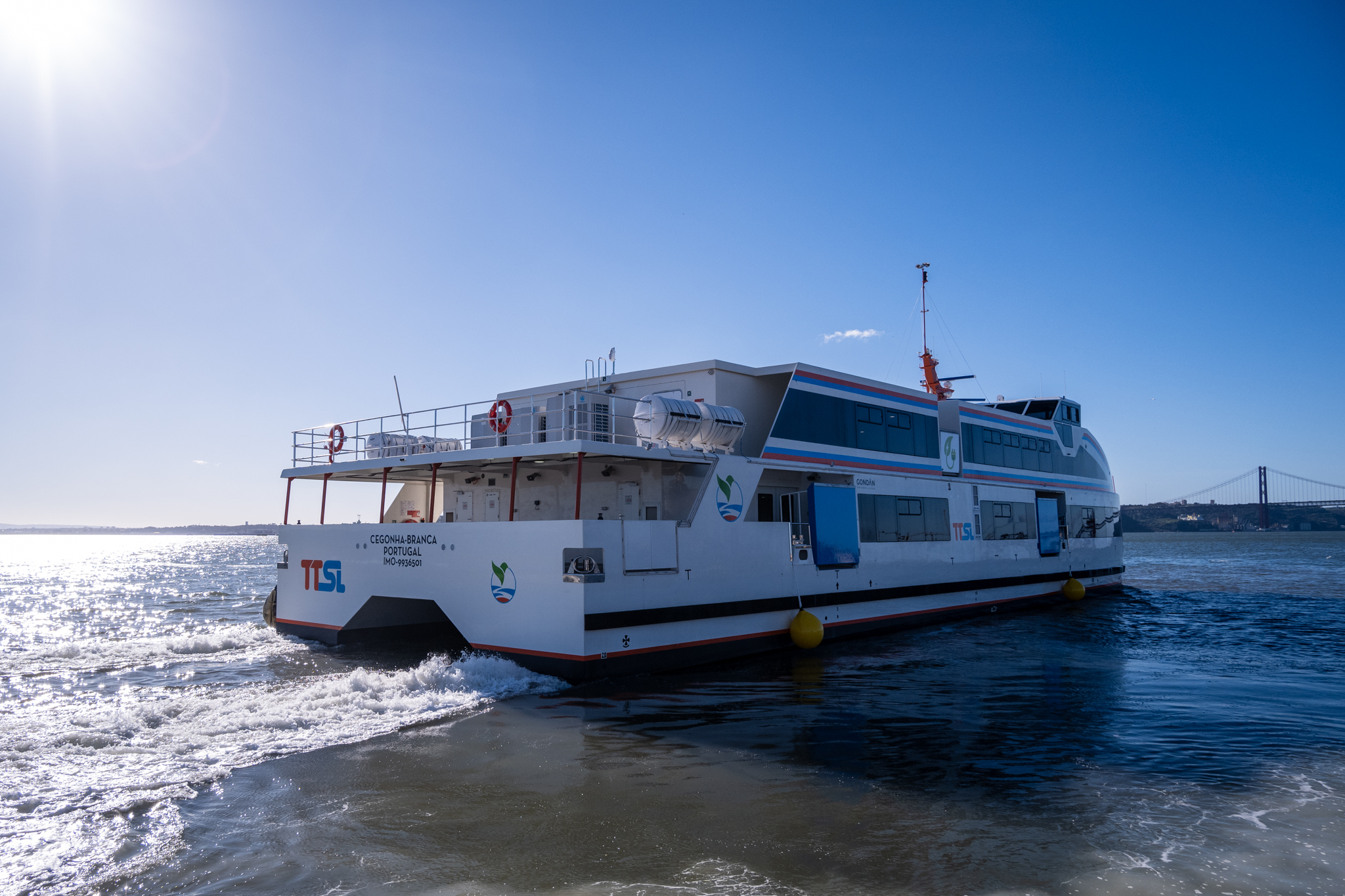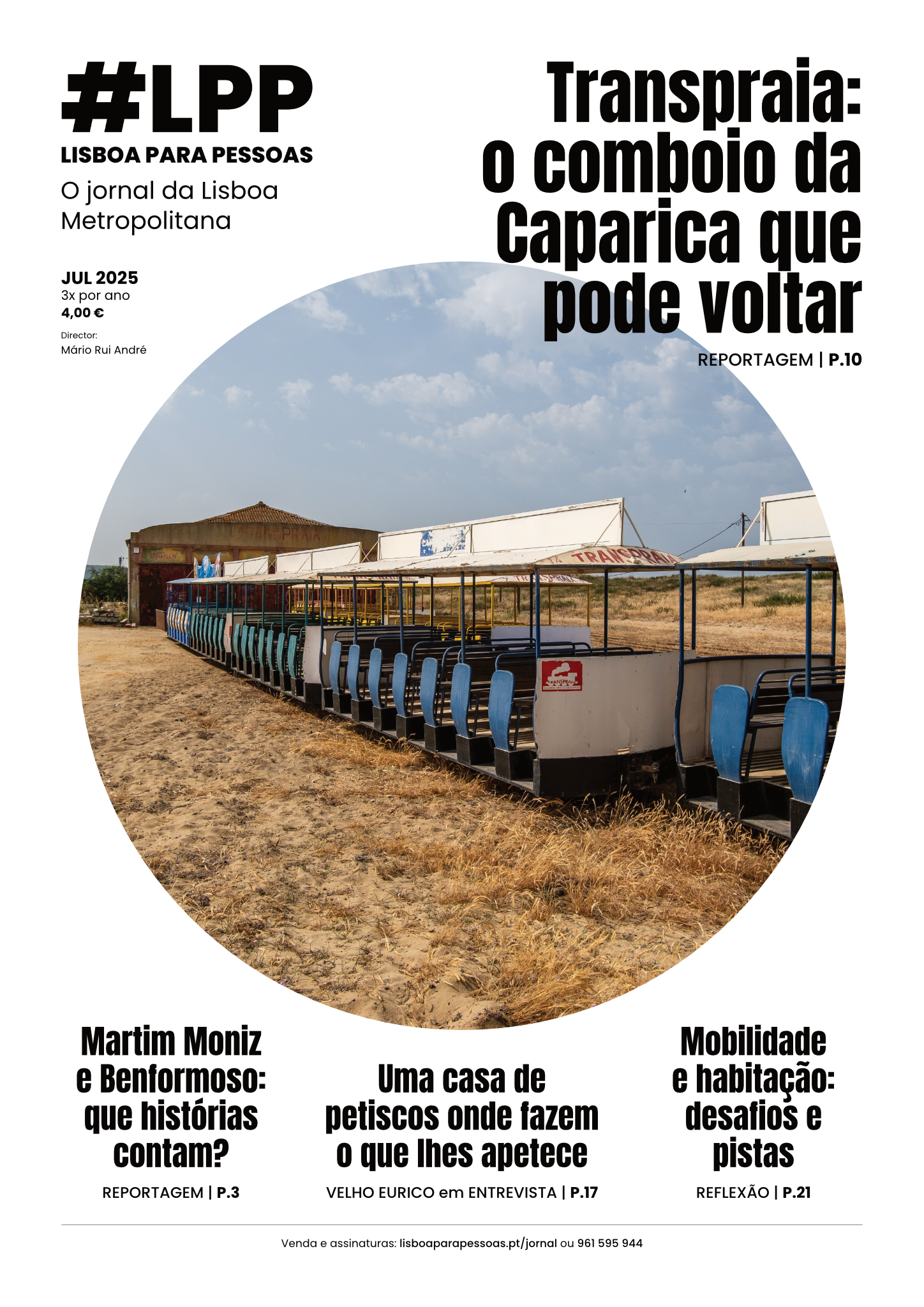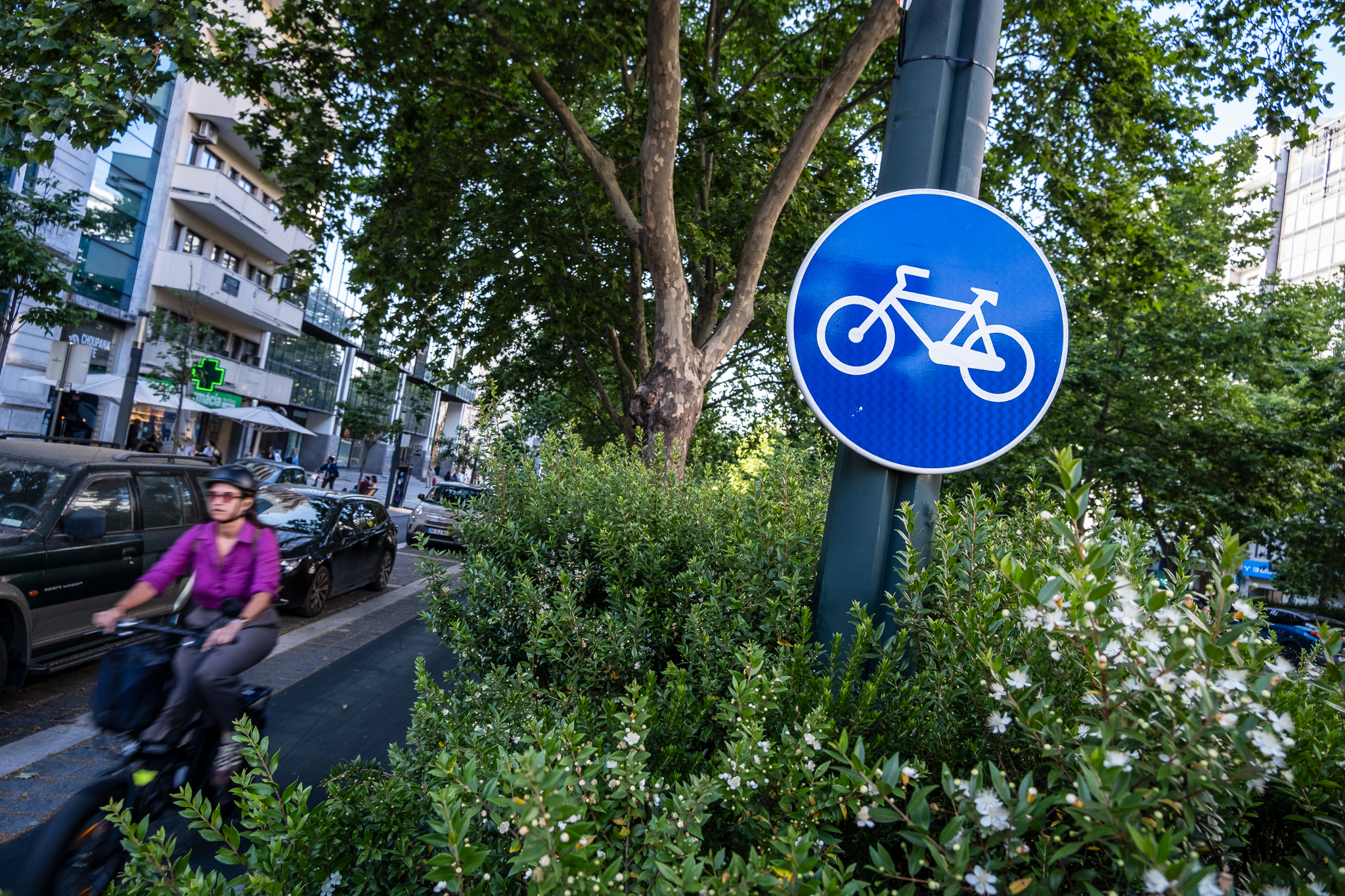By 2025, public river transportation in the Lisbon metropolitan area will have 10 new fully electric boats. The first ship in this fleet, named Cegonha-Branca, has already started sailing between the two banks of the Tagus. It made its "first flight" with passengers on December 14, a trip we accompanied.

At 11 a.m. on December 14, those waiting at the Seixal river station for the connection to Lisbon were surprised by a unusual boat. O White Stork, as it is known, quietly approached the boarding pier and received about a hundred passengers. Silently too, he set off towards the capital, where he arrived some 20 minutes later. This marks the official inauguration of the first of 10 electric boats that will be sailing in the Lisbon metropolitan area.
O White Stork arrived in the Tagus estuary in March this year, with battery included. The necessary tests were carried out, the training of the crews began, and at the end of November was visited by the Prime Minister, António Costa. Now it's time for people to enjoy it. TTSL (Transtejo Softlusa) is carrying out a series of experimental trips on the White StorkHe calls them "first flights". The first "flight" took place on the 14th. plan to do at least one a weekThe aim of these inaugural trips is to experiment and improve operations before the official start, leaving room for error.
On the trip that took place on December 14, departing from Seixal in the direction of Cais do Sodré, there were no faults that interfered with the passengers' experience, and the trip was guaranteed to be smooth and without mishaps. Among the TTSL teams, there was a mixture of nervousness and excitement - after all, it was the first departure of the new TTSL. White Stork with passengers, and both the TTSL management and the crew were eager for the event to be a complete success. The hundred passengers who had the chance to test the new vessel showed a certain amazement on their faces at being on a different ship to usual, even if they didn't understand the whole story straight away.






O White Stork is the first of 10 electric boats that TTSL has bought to renew the river fleet in the Lisbon metropolitan area. The aim is to replace the current ships with these new ones, except for the Barreiro and Porto Brandão/Trafaria connections. This replacement will be gradual and will take a few years, starting in Seixal, then Montijo and finally Cacilhas. TTSL only needs two ships at peak times on the Seixal and Montijo connections, and three on the Cacilhas connectionWith the 10 new ships it will receive by 2025, it will be able to ensure regular river transportation on these three routes and will also have three ships in reserve for any eventuality (breakdown, reinforcement, etc.).
Little by little
The next two electric ships, the Red Heron and the Pink FlamingoThey should arrive in February next year. Until then, TTSL wants to continue training the crews, as these vehicles have different navigation and handling characteristics to the current ones (for example, approaching the quays needs to be done with more caution due to the lighter materials the ship is made of). Construction is also underway on the fast charging stations: the one in Seixal will be the first to be ready, followed by Montijo, Cais do Sodré and finally Cacilhas. The aim is for the boats to recharge in just a few minutes during passenger pick-up and drop-off operations.
These charging points consist of a tall tower, located on the pier, from which a kind of plug will come out to connect to the boat's "socket", and a structure on land that supplies power to this tower. During the night, the ships will be loaded in Cacilhas at normal speed to avoid damaging the batteries. TTSL also plans to alternate the ships between different river crossings to prevent battery addiction, allowing the vehicles to vary their journey and charging times.
O White StorkLike the other "birds" that are yet to arrive, it offers a quieter and more comfortable journey. The ship's approach to the pier is discreet, as there is no smell of fuel and the only sound you hear is the ripple of the river. The trip is also very quiet, with practically no noise or odors. As it is a lighter vessel, it is more sensitive to river swells than the old ships, but nothing that is uncomfortable. O White Stork has 540 seats spread over two lounges, some of which are for passengers with reduced mobility. In the seats near the windows, there are conventional sockets and USB points for charging electronic equipment. And outside, at the stern, there is space for at least 20 bicycles.










During the trip, passengers have the opportunity to enjoy the scenery of the Tagus, as this ship is equipped with a huge panoramic window at the front. In addition, the side windows are wider, providing a more comprehensive view of the river. This feature offers an opportunity that can be exploited from a tourist point of view, especially on the crossing between Cais do Sodré and Cacilhas, which has been particularly popular due to the range of restaurants and more that Almada has to offer. For those who don't want to look at the river, there are several digital screens along the boat, for which TTSL will still be developing informative content.
Technical characteristics of ships
- 40.15 meters in total length
- 12 meters wide (excluding the side fenders)
- 3.13 meters at the pier
- 1.65 meters maximum loaded draft
- 155 tons of light displacement
- 16 knots at cruising speed (service)
- 2×500 kW main propulsion
- Propulsion and maneuverability by fixed pitch propellers and bow thrusters
- 2×930 kWh battery capacity
- 70 min minimum autonomy at operating speed
- GRP as hull, deck and superstructure material
A new phase in river transportation
The renewal of the TTSL fleet promises to have a major impact on the daily lives of the one million inhabitants of the municipalities of Almada, Montijo, Lisboa and Seixal who have to cross the Tagus, whether for business or leisure reasons. The 10 electric - or rather, electrically-powered - ships were specifically designed for TTSL's operational needs, i.e. they are the result of a design and construction tender that was won by the Spanish shipyard Astilleros Gondán. The ships' propulsion is of the "Battery System" type, based on accumulators and electric motors, with a sufficient load capacity to allow daily loading at the river terminals.
To power these electric motors, the ships are equipped with an Energy Storage System (ESS) made up of independent sets of marine battery modules, allowing, in service mode, a service speed of 16 knots and an autonomy of 70 minutes in continuous operation, corresponding to a battery charge condition varying between 90% and 20%. The batteries - nine in total - are being supplied separately by the same shipyards that manufacture the ships, for 16 million euros. O White Stork was the only vessel ordered with the consumable; in total, the 10 vessels (with a battery) are costing 52.4 million euros. And the charging stations are the result of an investment of 14.5 million euros.

This fleet modernization is supported by Environmental Fund and POSEUR (Operational Program for Sustainability and Efficiency in the Use of Resources), with TTSL assuming a cost of 11.5 million euros. As one of the main objectives is decarbonization, TTSL is obliged to scrap four of its current diesel ships in return. The carrier wants to keep part of its current fleet, such as one or two cacilheiros, for the symbolic and emotional value they represent for the Lisbon metropolitan area.
The new fleet will be more energy efficient than the current fleet and will have zero GHG emissions. In 2019, diesel consumption was 5,248,741 liters, corresponding to the emission of 13,122 tons of CO2. The new 100% electric ships will also enable river operations that are practically free of noise, vibrations and odors. With this advance in the process of decarbonizing river transport, TTSL also hopes to contribute to improving the ecosystem and biodiversity on the Tagus River.
For now White Stork will continue to make its "first flights" between Seixal and Lisbon. This is TTSL's least popular crossing and the one where experimental trips will also be made. The carrier's aim is for the Seixal connection to be the first to be fully electric. This is expected to happen in 2024. Next year will also see the promised merger between Transtejo and Soflusa has been completedTranstejo and Soflusa are two separate companies that have been operating in recent years under the same brand - TTSL - and the same management. This merger will eventually allow all the workers and the fleet of the Barreiro link, which currently belongs to Soflusa, to be integrated into Transtejo.






